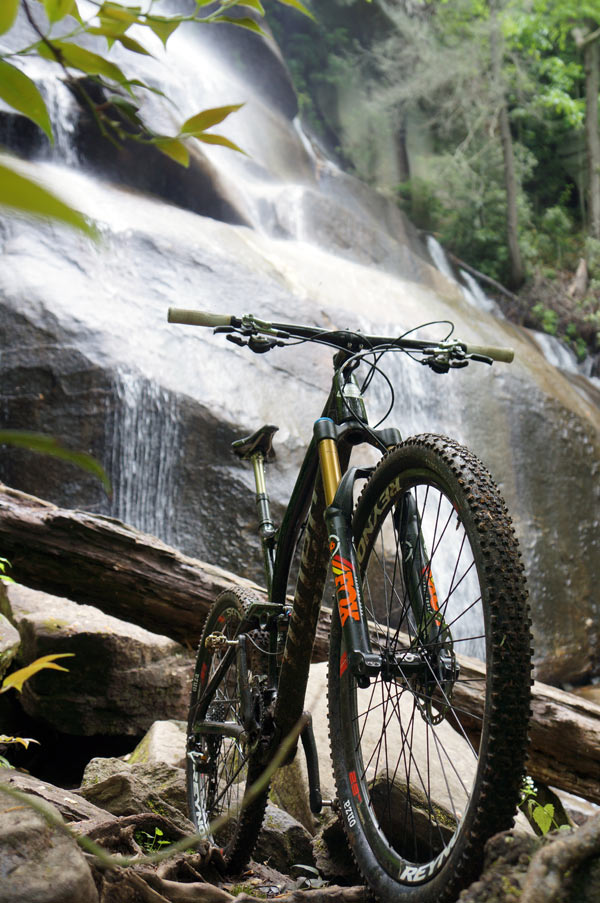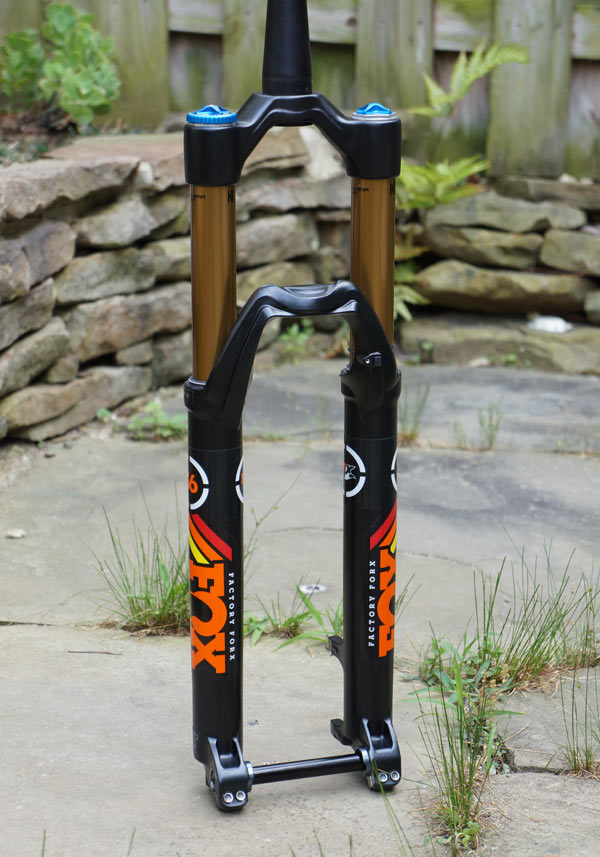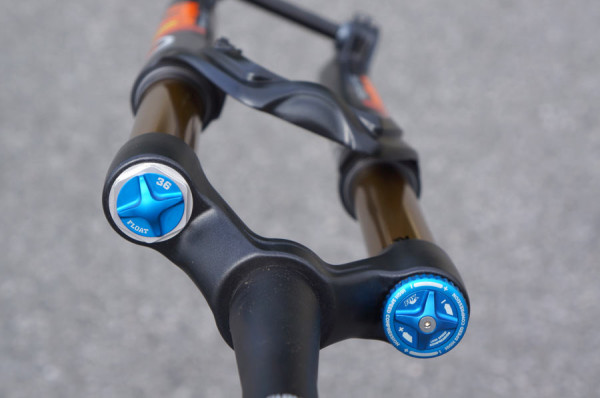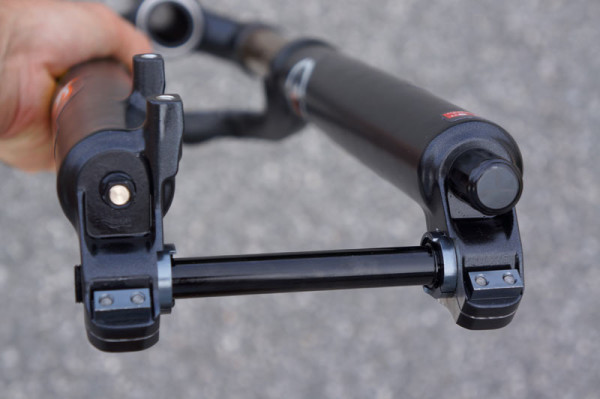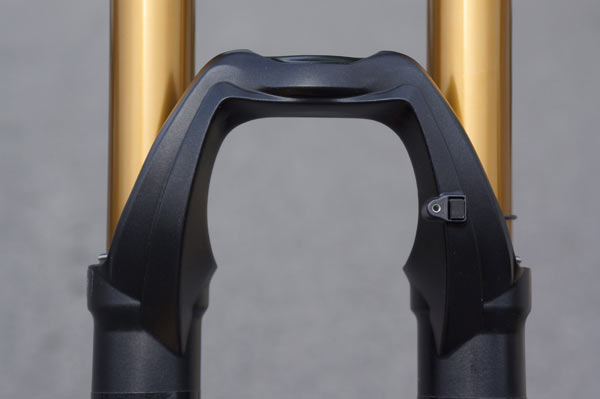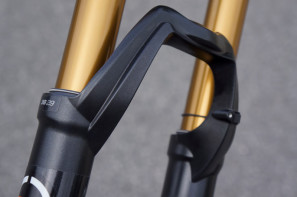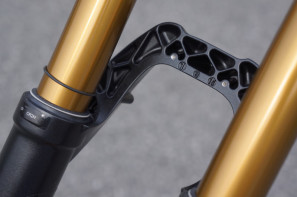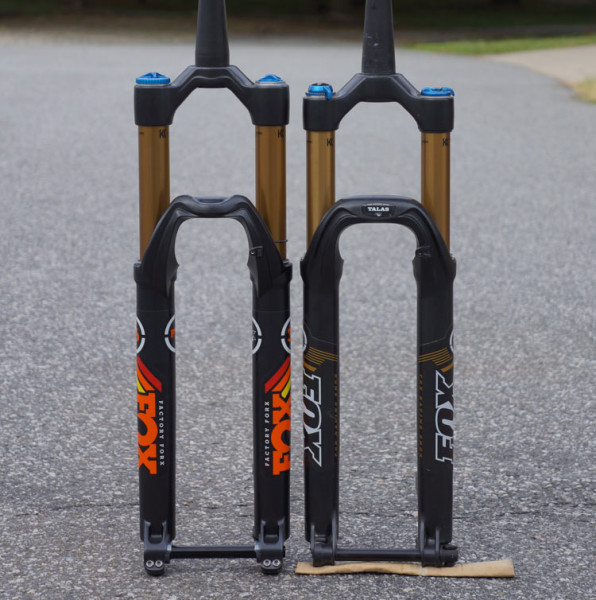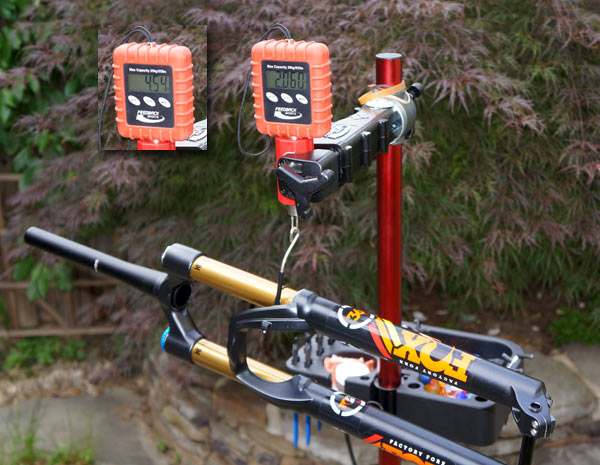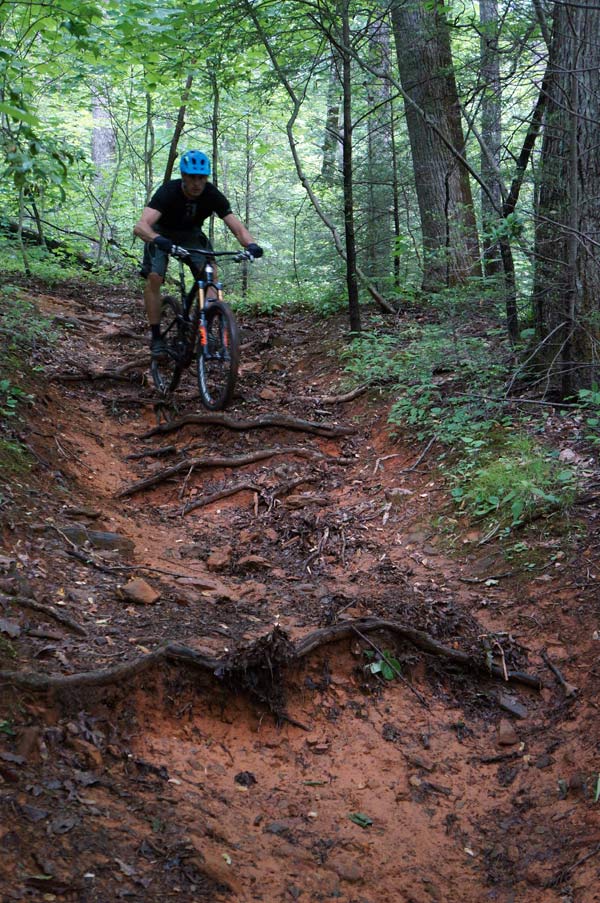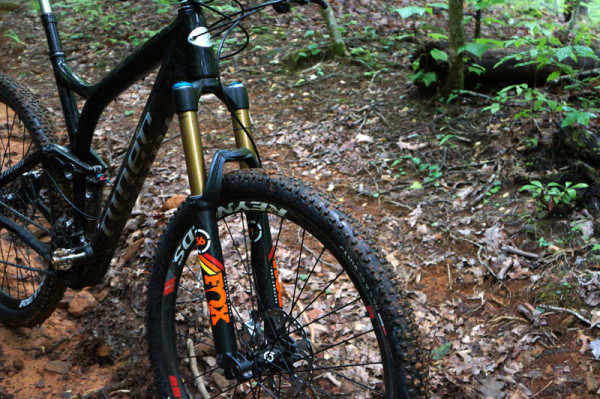For 2015, the Fox 36 became their flagship fork, imbued with all of their latest technology to deliver new levels of control, adjustability, smoothness and light weight.
Having ridden a number of Fox forks over the years and feeling the ups and downs of their internals from model to model, the new 36 had quite a bit resting on its shoulders. After all, not only did it need to live up to the hype, but its technology would be paving the way for Fox’s future forks, too.
Everything about the 36 is new. The outer casting and thru axle system, the seals, bushings and sliding parts, the oil, the air cartridge and even the Kashima coating. The goal was to create a world class fork for the burgeoning enduro market that led its category in stiffness, weight, adjustability and functionality. For a deep dive on all of its tech, we’ve covered the product launch here, ran through the seal and damping tech here, and took a look at the new FLOAT air system here. In this review, I’ll recap the highlights, put it on a scale and let you know how it handled itself on Western North Carolina’s mountains…
The Fox 36 is available in 26″, 27.5″ and 29er wheel size options, all colored Diamond Black. You can get it with either the new Float air spring with travel ranging from 140mm to 180mm depending on wheel size (29er is offered in 140, 150 and 160) or their TALAS adjustable travel spring with 30-40mm adjustments topping out at 170mm. In other words, you’ve got options.
Ours came with the heritage stickers, and others are available aftermarket. The lowers’ casting is updated to drop weight without sacrificing stiffness, and it’s made for a minimum of 180mm brake rotors.
Up top, you have the standard air valve cover on the left and compression damping controls on the right. With such a big fork, a lockout lever or remote just doesn’t seem right, and I didn’t miss it at all. Instead, the space is used for something all modern forks should have (IMO): dual high and low speed compression settings. Being able to externally dial in both makes it easy to get the fork tuned to your body weight, riding style and terrain far better than single-control models. At the moment, the 36 is the only way to get this on a single-crown Fox fork, but rumor has it that may trickle down to the others, too. Fingers crossed.
I found the adjustment range plenty adequate, but it did take a few rides to really tweak it to 95% right. From there, I’ll still fiddle with it on some rides to suit the different conditions. But 95% is pretty darn good, setting the balance between small bump sensitivity and big hit/hard landing support.
It’s worth plugging our Suspension Setup Series here, a must read for anyone looking to get the most out of their suspension.
On the bottom is the rebound knob, which controls all of the rebound damping with an emphasis on low speed control. That’s because there’s a shared rebound circuit and the knob controls the size of the return port on the damper’s shaft.
The actual bounce is provided by an air spring that can be tuned via easily installed volume spacers.
The arch is heavily shaped to add stiffness. There’s about 3.25″ (82.5mm) between the arch where the tire is widest. I ran Onza 2.25 tires for the duration of the test, with ample room on either side. My hunch is a 2.6 would be a safe max tire size.
Same for the crown. Except for a single 26″ model with straight steerer, it’s available only with a 1.5″ tapered steerer.
The 36’s dropouts use a bolt-in design that accommodates both 15mm and 20mm axles. For 20mm, just bolt the axle directly into the fork. For 15mm (tested), two inserts bolt in and have the lipped guides that the hub slots into, then the axle threads in using an allen wrench.
While 27.5″ is getting most of the attention in enduro, brands like Niner and BMC continue to push the big wheels down the mountain faster and faster. The trick with adding more travel to a 29er is keeping the handlebar height at a reasonable level, so Fox paid particular attention to the axle-to-crown ratio significantly. The new 36’s virtually match the dimensions of the 34 series. This keeps the front of the bike lower for better control and rider position without the use of wildly negative-rise stems. Here, the new 36 150mm (left) is shown next to a prior year’s TALAS 34 140mm fork. With the axles sitting parallel, their 10mm travel difference is basically matched in the A-to-C height differences…which is a big improvement over prior model year 36 forks.
Fox doesn’t have published weights as of this review for comparison, but the 150mm 36 FIT 29er with axle, brake hose guide and uncut steerer came in at 2,060g (4.54lb). Not too shabby for such a beast!
It also comes with a sticker and star nut. MSRP is about $1,050.
RIDE REVIEW
Put simply, the Fox 36 is a bruiser. I mounted it to my Niner RIP9 RDO and headed straight for Asheville, where it proceeded to tear through anything that got in its way.
In Pisgah’s notorious mix of roots and rocks, that meant full speed assaults behind locals that knew what was coming up even if I didn’t, trusting that the fork (and good brakes) would get me out of trouble. It also meant being able to ride the paths less taken, not worrying about whether they were the smoothest line, but whether they were the more fun, more challenging line. It simply gobbled up anything I could throw it at, which made for some dizzying descents.
The 36’s sturdiness proved itself run after run at Beech Mountain’s downhill race course, where large rocks are strewn this way and that. The steep angles of some sections make it near impossible to pick your way down at a crawl, particularly when it’s wet. Speed is rewarded, but only if the equipment is up to the task.
The rotund stanchions kept the front wheel tracking where I aimed it, allowing me to focus a bit further down the trail rather than threading through each and every rock. All of the care taken to smooth the fork’s internals paid dividends over the little stuff, letting it react quickly and make the world a bit flatter. When a big hit came, it absorbed it in real time without bucking the front end upward.
The fork proved so capable of smashing through obstacles that it quickly overpowered the RIP’s 125mm of rear travel. To help keep the rear end from blowing through its travel, I installed a spacer to reduce air volume so it’d ramp a little quicker and sit higher in it’s travel. Ideally, the front and rear travel would be more closely matched, but this is worked surprisingly well at balancing the bike out on all but the most extreme trails.
Compared to the stock 110-140mm TALAS fork the bike came with, the 36 is head and shoulders above in every way. The suspension feels so much more plush, the lowers glide over the stanchions like butter even after half a year of riding in wet and mud, and it’s far more solid. Yes, there’s 10mm more travel, but it’s what’s making the travel happen that’s the real improvement, and the fatter stanchions give it a rock solid platform on which to operate. Unless you’re building an XC bike, this is the Fox fork you want.
If you’re swapping this in apples for apples, then you’re overall handling may be a bit tighter thanks to the lower A-to-C than what it’s likely replacing. For me, the extra 10mm did make the front end wander more on the climbs, requiring extra attention on slow uphill grinds. Without any sort of platform or lockout, standing sprints generate suspension bob, but less than expected, generally staying in the top third of its travel even when really whipping the bike around to scuttle up a short hill. It’s a sacrifice worth making for the amazing downhill performance.
At the end of the day, all of the improvements made to the fork are about speed. If you have more control, whether through damping, steering precision or being able to hold a line through the rough, you gain confidence. And with confidence, you can go faster. This fork inspires a scary amount of confidence, both for the rider and for Fox’s future forks.
